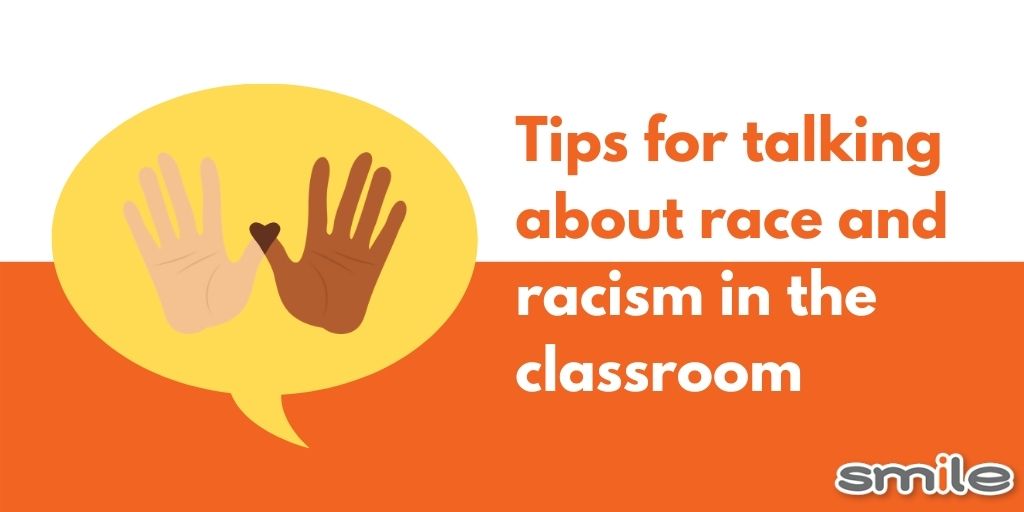Blog
Are you a supply teacher or teaching assistant looking for some help and advice? If so, you are in the right place. Our blogs offer tips and tricks on everything from classroom management to interview tips and support, along with day in the life case studies from real supply teachers, ECTs and cover supervisors. They also give you an insight into what working for Smile is like, the ways which we support local communities and charities and the training and events that we offer.
For more good stuff like this, follow us on social media - you can find us on Facebook, Instagram, Twitter and LinkedIn. Or pick up the phone and give us a call.
Education is a powerful tool for creating change and it’s important that teachers and teaching support staff, don’t shy away from challenging conversations in the classroom, even if they make you feel uncomfortable.
The Black Lives Matter movement has most certainly made an impact on society, motivating more people to learn more about racism. It’s likely that many students have questions, not just about racism but also about race and diversity. Talking to students about these issues and the part they play is just one way in which educators can facilitate change.
Below are some tips that teachers can use to help them talk about racism with their students.
Expand you knowledge
Lots of teachers would say that their biggest worry when broaching the subject of race is that they will say the ‘wrong’ thing or they won’t have the ‘right’ answers. This is especially true for teachers who are not from ethnic backgrounds. The best way to tackle this fear? To read, watch and listen. By learning more, you’ll be better prepared to answer questions the students might have and better prepared to teach them.
Once you’re feeling a little more comfortable with the terminology and have a deeper understanding, it’s time to put it into practice. If you need some help kick-starting the conversation, we’ve put together some resources to help.
Model inclusive behaviour
Of course, it goes without saying that teachers should ensure that their classroom is a racism-free zone. In the classroom, it is the the teachers job to encourage their students to see other cultures as different rather than superior. In primary school, activities like ‘show and tell’ and be used to encourage students to talk about their culture which provides not only a learning moment but a chance to celebrate differences.
It’s also super important to make sure that you treat all of the children in your classroom the same. For example, make sure to take the time to learn every child’s name and how to pronounce it correctly to ensure that they feel seen.
Don’t make Black History just one month
Black history is part of Britains history but there is so much about it that isn’t taught. Often the first time most children hear about black people in a historical context is during the teaching of slavery. Now, that’s not to say that is something we shouldn’t talk about as it’s important for students to understand and come to terms with racist events in the past. But, there is much more to black history than just slavery.
The Birmingham Education Partnership, otherwise known as BEP, has lots of free resources to help teachers and schools incorporate diversity into the curriculum. You can find diverse resources for almost every subject including English, geography and even art.
Use diverse resources
Children of all ages want someone to look up to and someone to model themselves on. Currently, our education system isn’t as diverse as it could be (though there are lots of amazing black people who have influenced changes in eduction) leaving those students from ethnic backgrounds without the role models they need. However, one thing teachers can do to ensure that the resources that they use in class are inclusive of all races, genders and religions.
For example, you could read books by famous black authors like Malorie Blackman or focus on the hard work of Mary Seacole who, like Florence Nightingale, cared for British soldiers who had been injured during the Crimean War.
We hope that this blog will give you not only the confidence but the inspiration to start an open dialogue about race and diversity in your classroom. If you have any tips or helpful resources to share, feel free to add them the comments below.
Add a comment:












